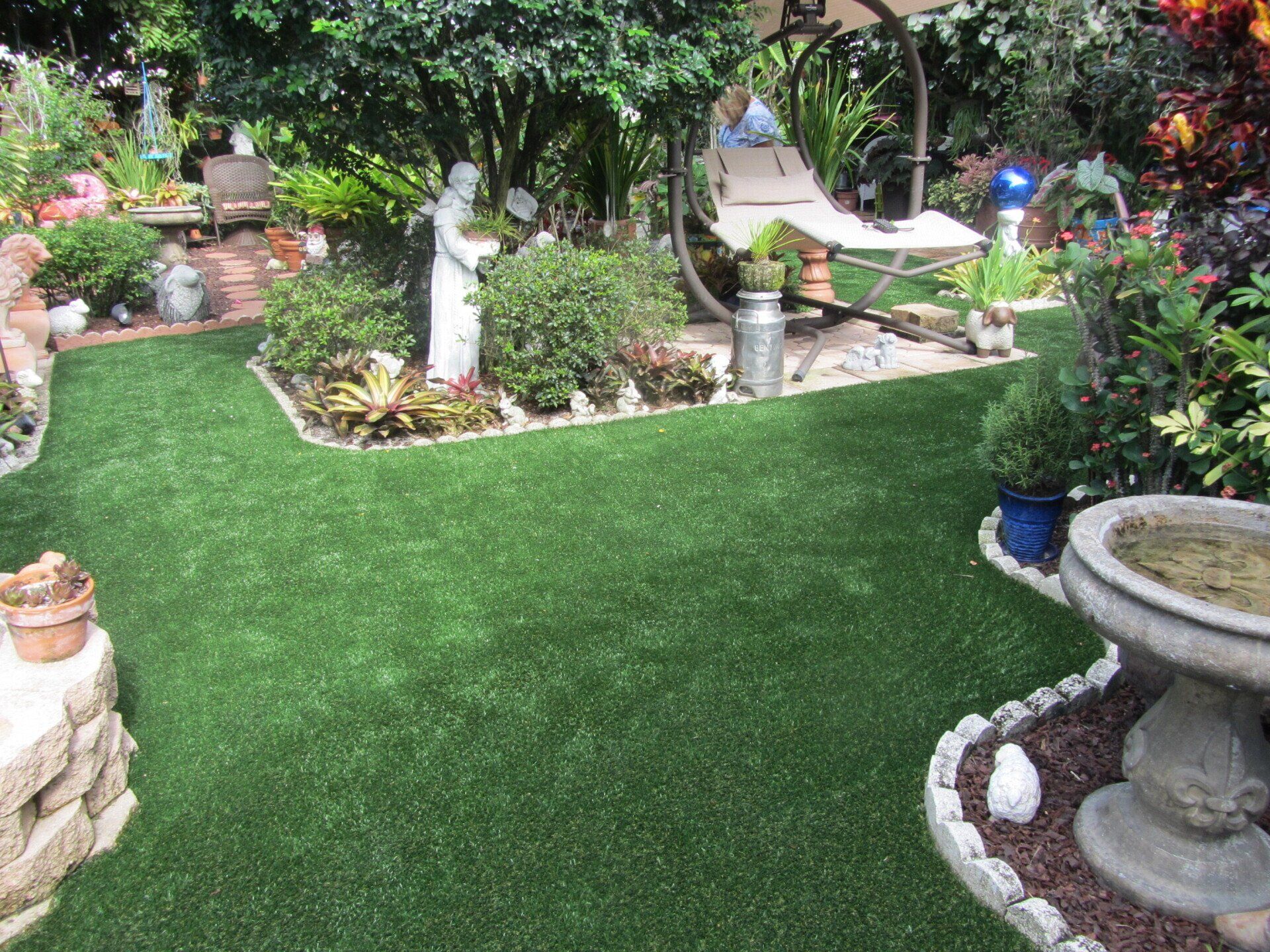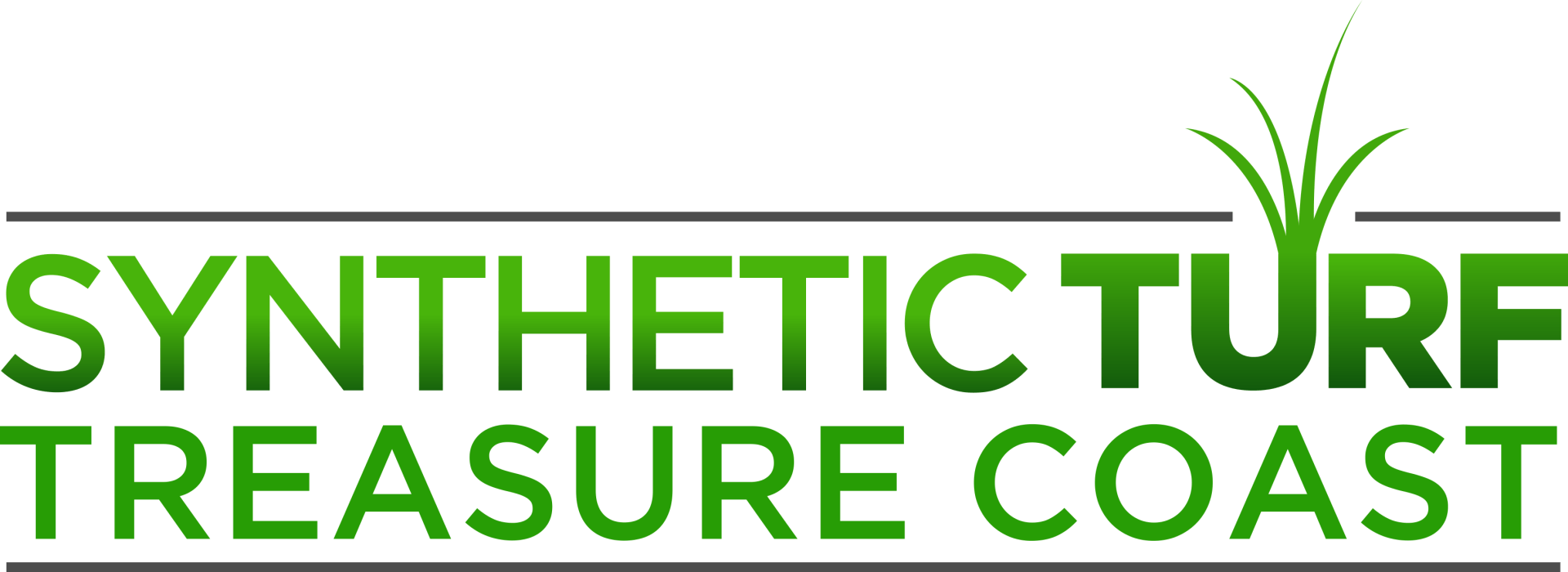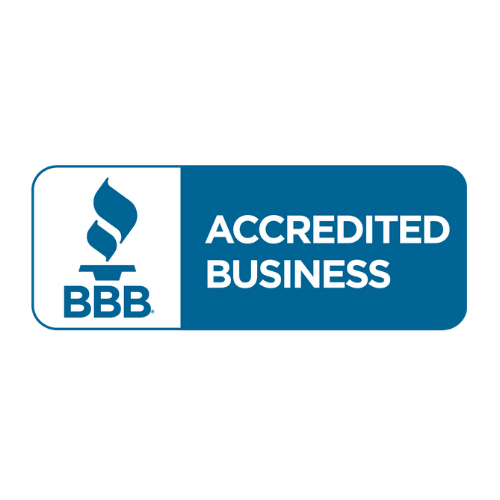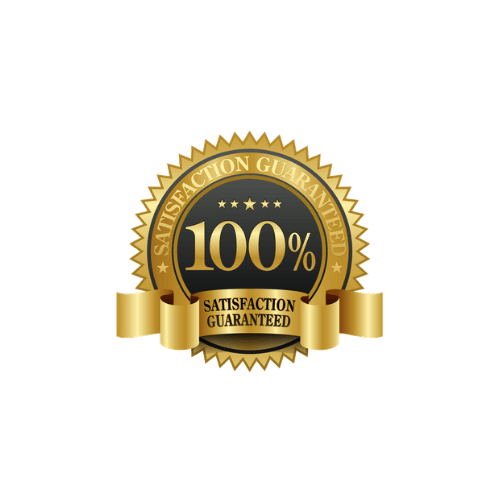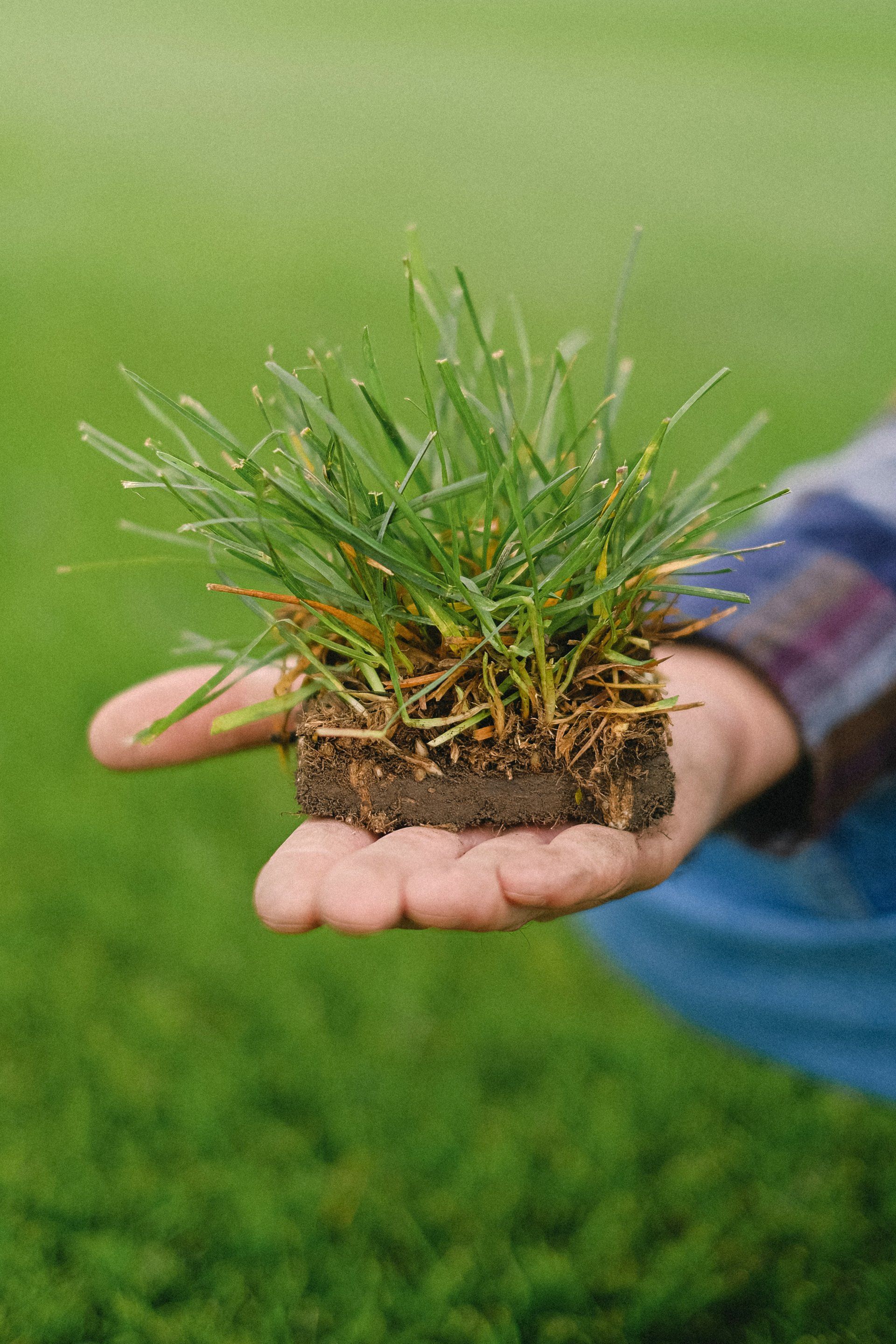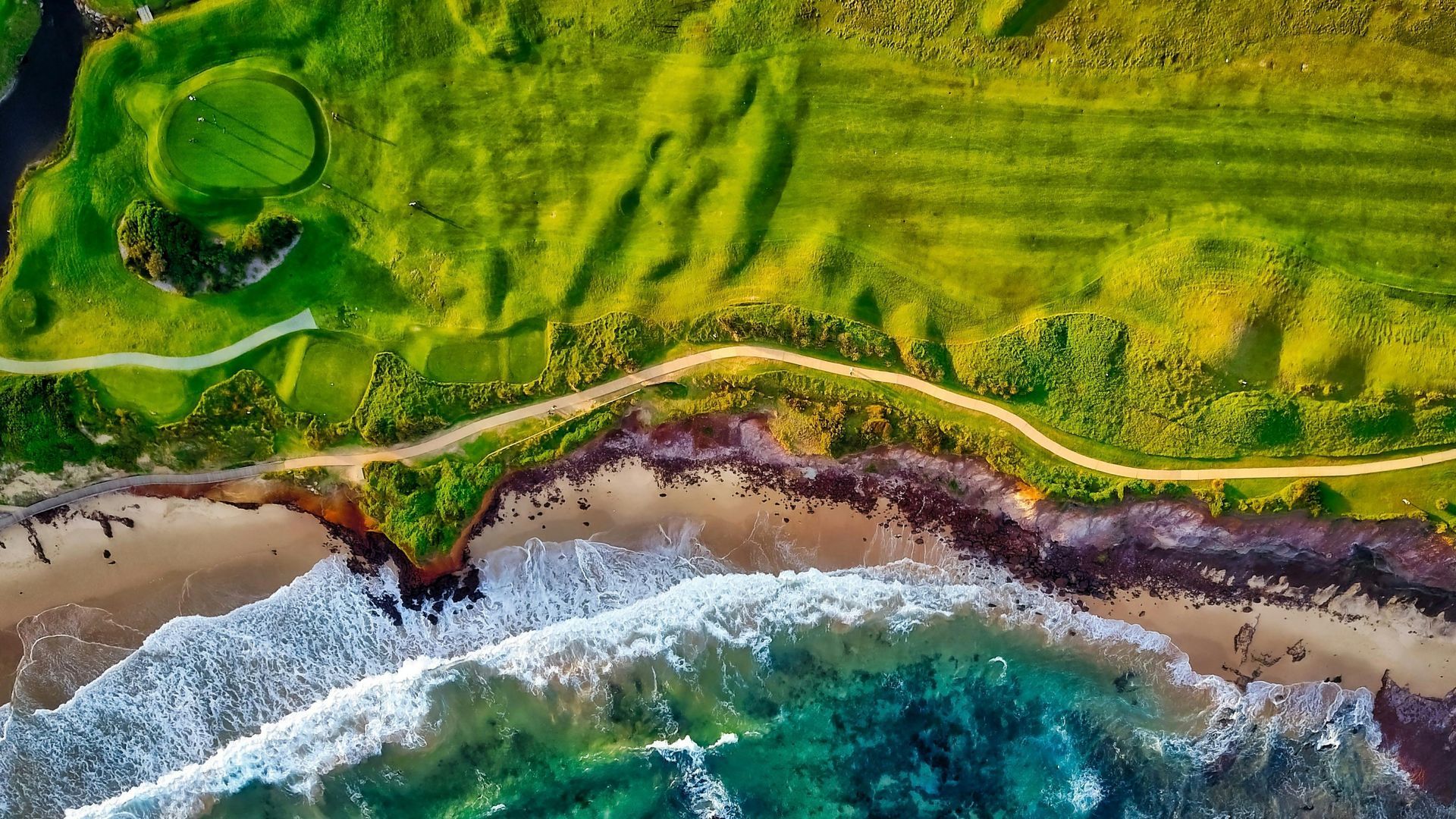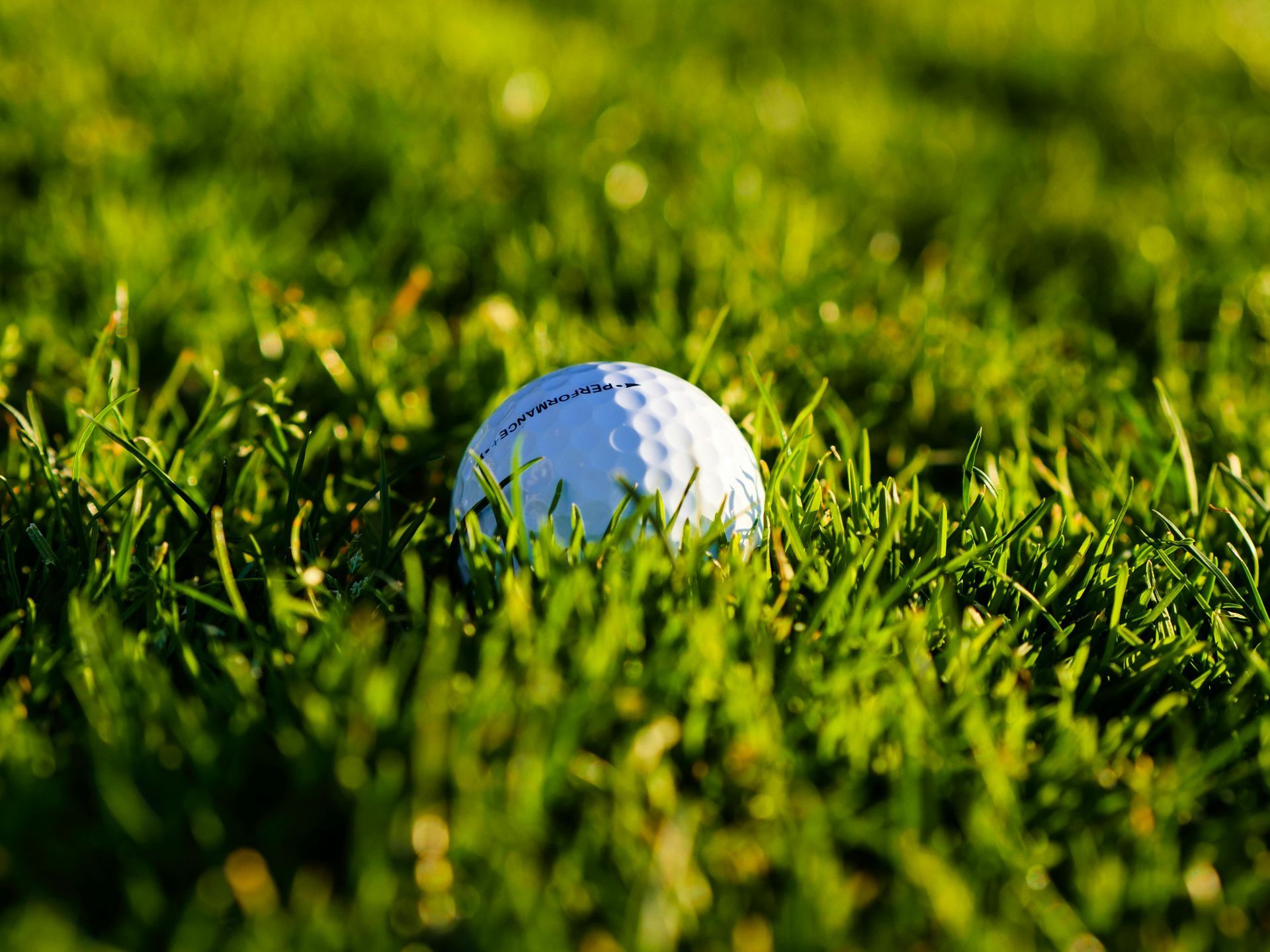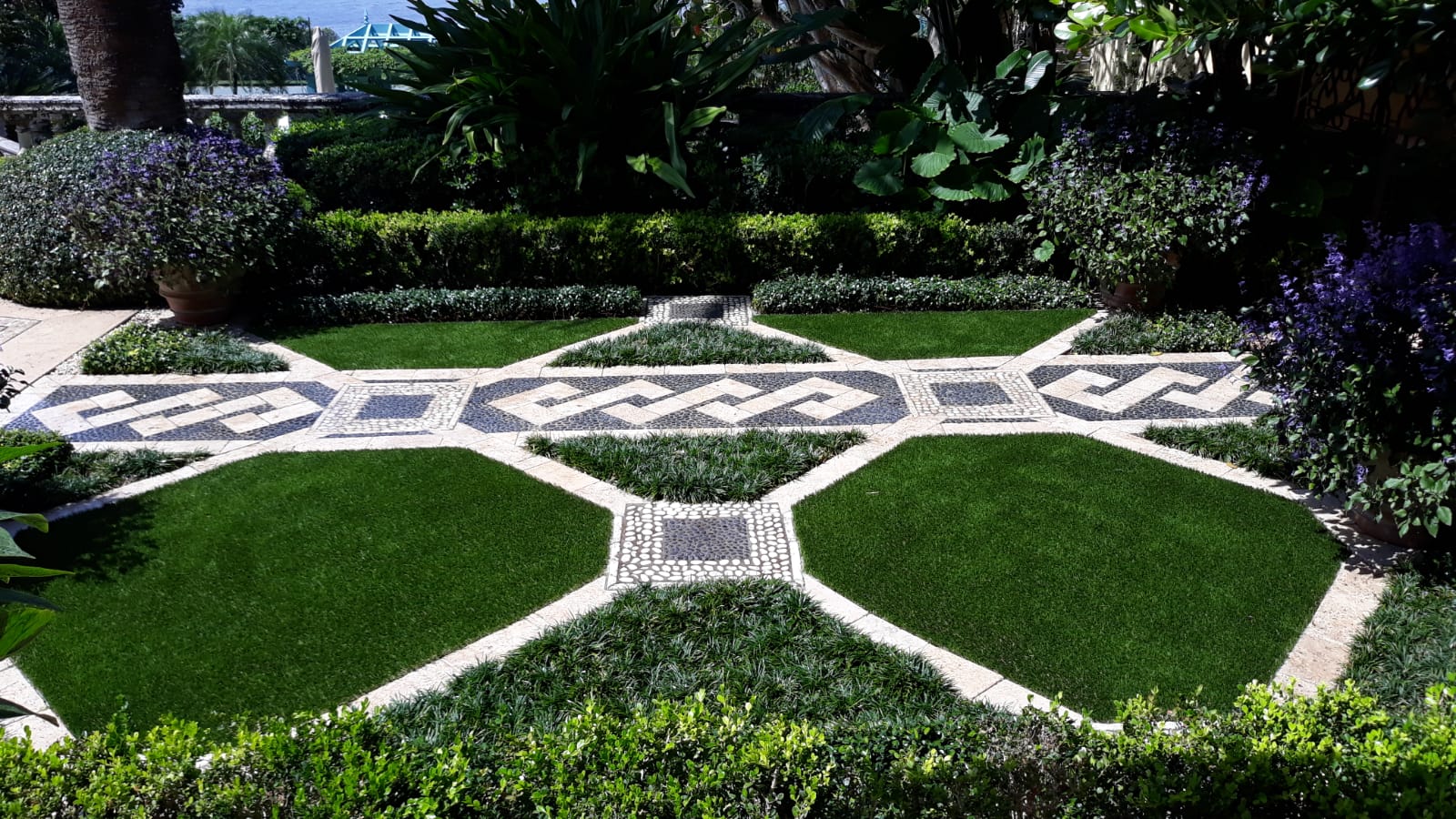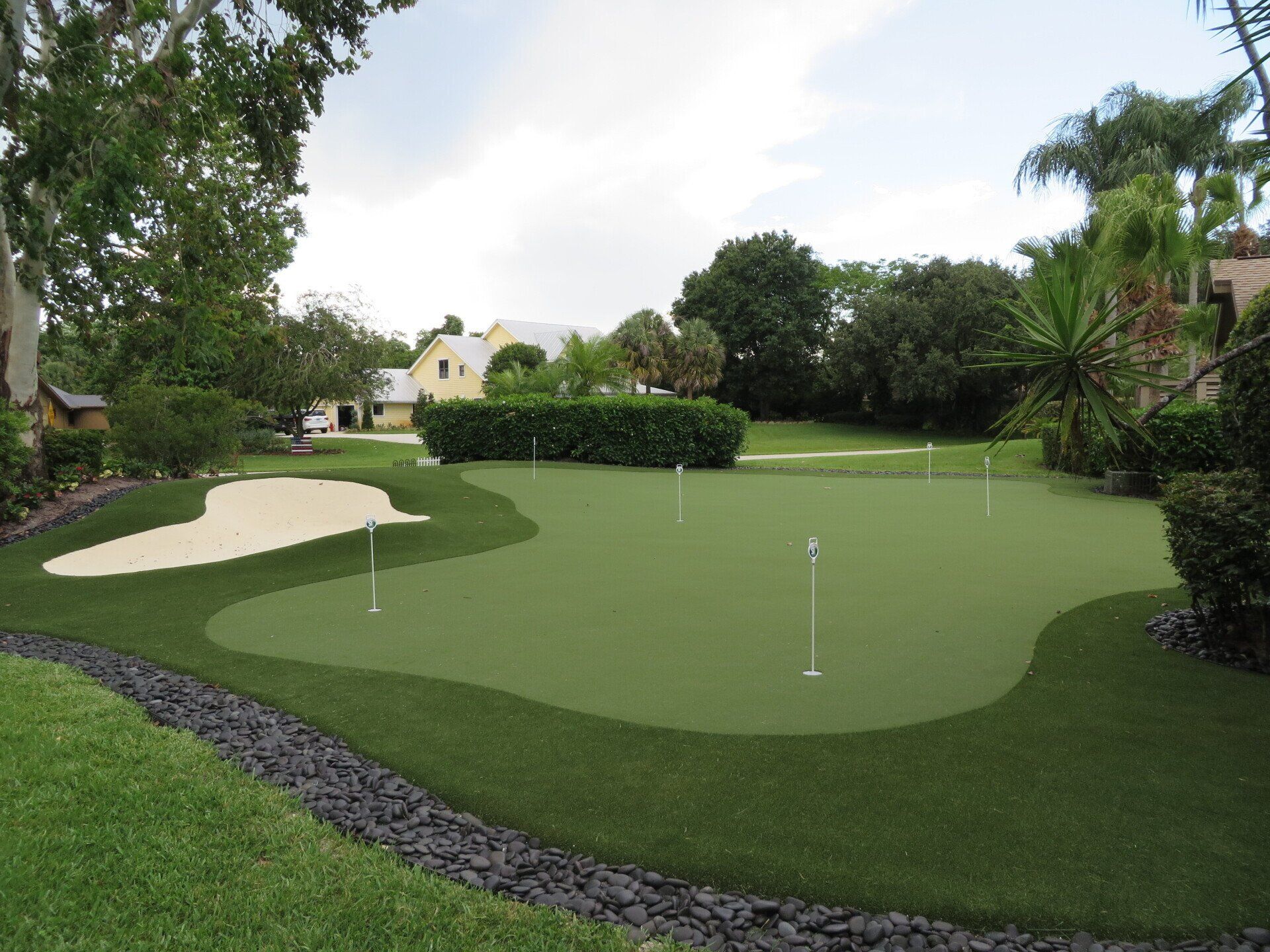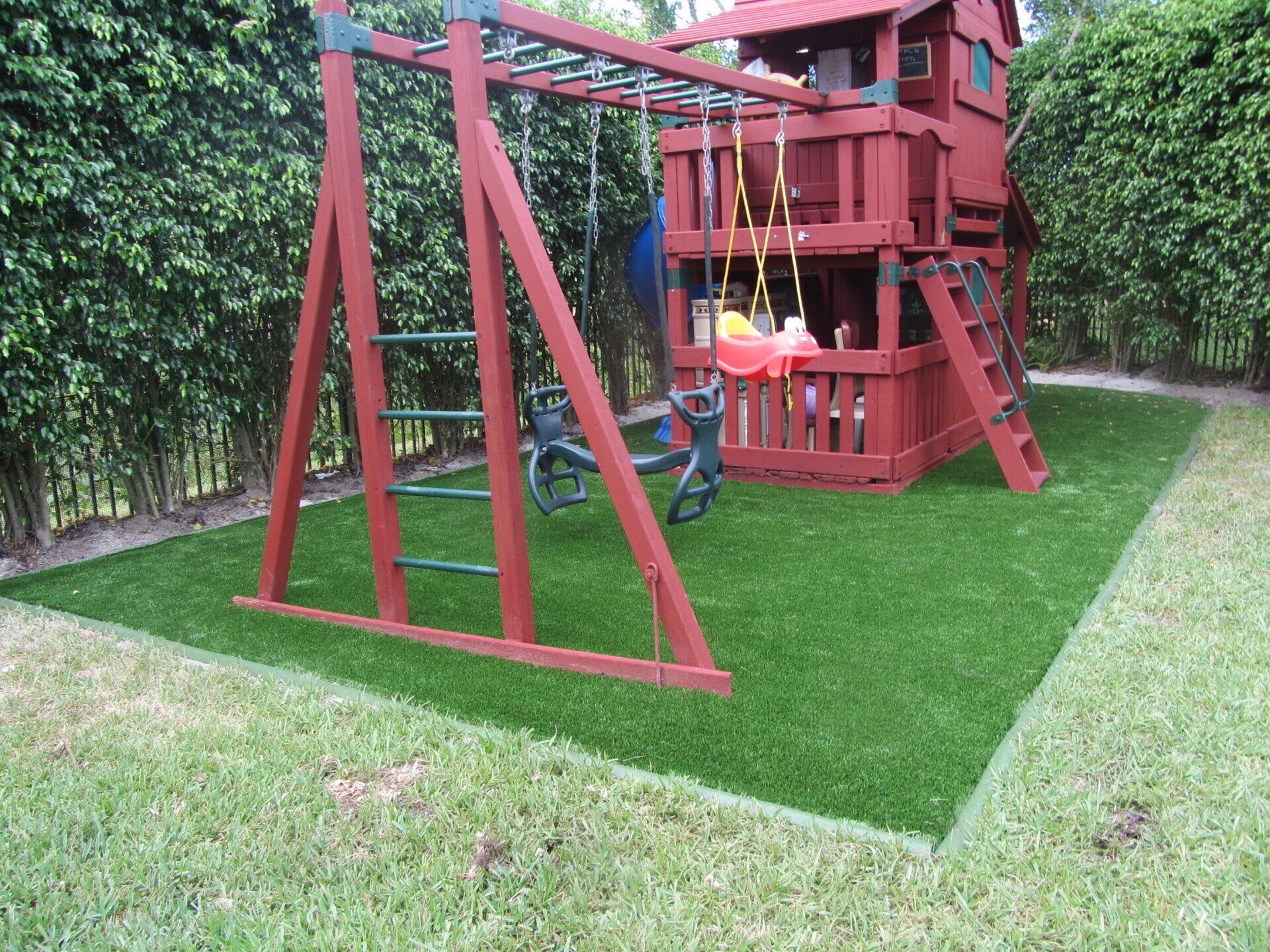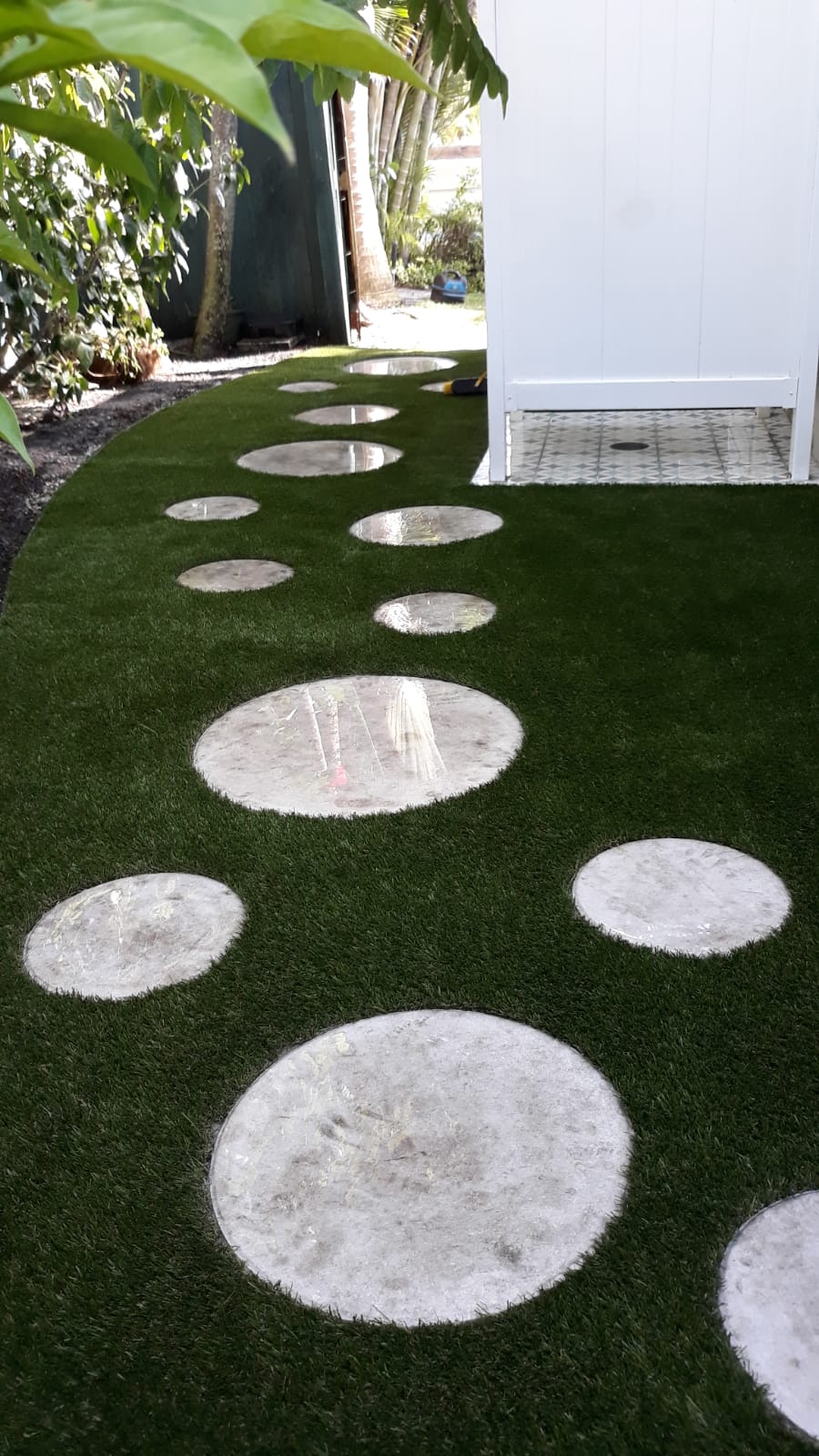Since 2001
Definitive Guide to Artificial Turf Maintenance
Keeping Your Lawn Lush, Safe, and Pristine

The Promise of a Perfect Lawn
The widespread adoption of artificial turf for residential and commercial landscapes is largely fueled by the promise of a perpetually green, perfectly manicured lawn with minimal effort. This vision of a "set it and forget it" landscape has given rise to a common misconception: that artificial turf is a no-maintenance solution.
While it is true that synthetic lawns eliminate the need for mowing, fertilizing, aerating, and weeding, they are not entirely self-sufficient.
The reality is that artificial turf is a low-maintenance alternative that still requires a deliberate and consistent regimen of care to protect the initial investment. A small amount of time dedicated to proper upkeep is the key to ensuring the lawn's aesthetic appeal, structural integrity, and hygienic safety for many years to come.
This guide is designed for the discerning homeowner or property manager who understands this critical distinction and seeks to master the art of proper turf care.
With 20 years experience, we are one of the best artificial turf installers near you in Palm City, FL! Give us a call today to get a free quote.
Your Turf, Our Care
The Foundation of Care: Why Maintenance Matters
The Art of Routine Maintenance: Your Care Calendar
A successful maintenance plan is not a rigid list of tasks but an adaptable schedule that responds to the turf's unique needs, use intensity, and local environmental conditions.
Weekly & Bi-Weekly Quick Care
This routine care is the most important for keeping the turf in top condition and should be performed weekly or bi-weekly depending on the level of use and the amount of debris accumulation.
- Debris Removal: The first step is to clear away any loose debris such as leaves, twigs, and other organic matter. This can be done with a leaf blower, a plastic rake, or a soft-bristled broom. Removing this matter prevents it from decomposing and creating an environment that can attract pests. It is critical to never use metal rakes or tools with sharp edges, as they can tear the turf's mesh backing and cause permanent damage.
- Light Rinsing: A light rinse with a garden hose and a spray nozzle every one to two weeks helps to remove fine particles like dust and pollen from the surface. This is particularly important for properties in high-wind or dusty climates.
Monthly Deep Cleaning Protocol
Once a month, the turf requires a more thorough cleaning to address issues that daily or weekly care might miss.
- Brushing: Use a turf rake or a stiff, synthetic-bristled broom to brush the fibers against their natural grain. This action is vital for restoring the blades to their upright position, which prevents matting and maintains a lush, natural appearance. This is also an opportune time to redistribute infill material that may have migrated from high-traffic zones.
- Deeper Rinsing: Power-rinsing the turf with a hose helps flush out deeply settled dirt and debris. A power washer can also be used for a more aggressive cleaning, but extreme caution is advised. The nozzle should be held at least a foot away from the surface to prevent damage to the turf fibers and to avoid displacing the infill.
The Four-Season Turf Care Calendar
Maintenance is not a static process; it must be tailored to address the specific challenges of each season and climate.
- Spring: With winter debris cleared, spring is the time for a full deep clean and inspection. Property owners should brush the turf fibers to "wake up" the lawn, inspect for any signs of wear, and perform a full deep clean to prepare the surface for increased use in warmer months.
- Summer: In hot, dry climates, the primary focus is on cooling the surface and managing dust. Rinsing the turf more frequently helps to reduce dust buildup and can provide a temporary cooling effect.
- Fall: As trees shed their leaves, frequent removal of organic debris is essential. Allowing leaves to accumulate and decompose can trap moisture, which is the primary catalyst for moss and mold growth.
- Winter: In colder climates, winter care requires specific considerations. Property owners should avoid heavy snow buildup and never use metal tools or shovels to clear ice or snow, as this can easily damage the fibers. A plastic shovel or a leaf blower is the recommended tool for snow removal. It is also important to avoid using ice melts containing calcium chloride, which can be harmful to the turf.
The need to adjust maintenance based on seasonal conditions illustrates a key principle of turf care: a successful routine is a dynamic response to the environment. The focus on rinsing in the summer addresses heat and dust, while the emphasis on debris removal in the fall and winter is a preventative measure against moisture-related issues. This approach frames maintenance not as a checklist but as an adaptable strategy for preserving the turf year-round.
Essential Tools and Products for a Pristine Finish
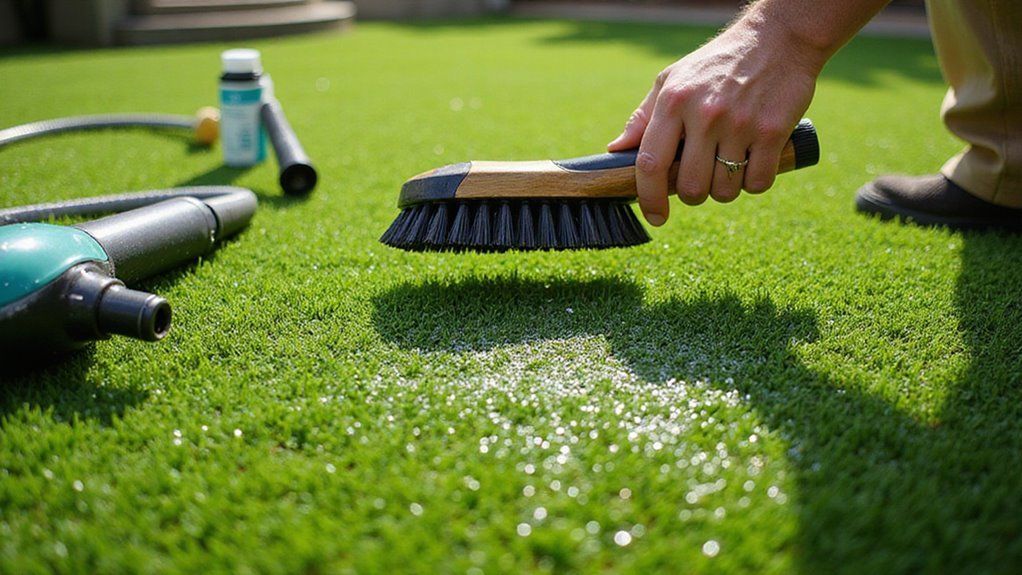
The right tools and cleaning products can make maintenance simple and safe, while the wrong ones can cause irreversible damage.
The Homeowner's Toolkit
A basic set of tools is all that is needed for most routine maintenance tasks, with more advanced equipment available for larger projects.
- Essential Tools: A plastic rake or a soft-bristled broom is essential for removing debris and brushing the turf fibers. A garden hose with a spray nozzle is necessary for rinsing and cleaning spills. A leaf blower is a highly effective tool for quickly clearing leaves and other loose debris from the surface.
- Advanced Tools: For larger lawns, a power brush or a specialized artificial grass vacuum can make maintenance faster and more efficient. However, it is crucial to use a vacuum with adjustable suction and a brush attachment designed for turf, as a regular household vacuum with rotating brushes can pull out the fibers.
- What to Absolutely Avoid: Never use metal rakes, shovels, or other sharp-edged tools, as these can permanently rip the turf's backing. Power washing should be done with care, ensuring the nozzle is not held too close to the surface, which can damage the fibers and displace infill.
Home-Brewed vs. Commercial Solutions
A variety of cleaning products, both homemade and commercial, can be used to address spills and odors.
- DIY Solutions: A solution of equal parts white vinegar and water is a natural and environmentally friendly disinfectant that is effective for general cleaning, stains, and odors. For spills like cooking oil or grease, a mixture of mild soap or baby shampoo with warm water is recommended.
- Specialized Products: For stubborn issues, particularly those related to pet waste, commercial products are highly effective. Enzyme-based cleaners are specifically formulated to break down the non-water-soluble uric acid found in pet urine, a task that water alone cannot accomplish. Turf deodorizers, such as baking soda, can be applied to neutralize odors. Products containing chlorine dioxide (ClO2) are recommended for deep cleaning and disinfecting, as they work by breaking down the cell walls of bacteria without leaving harmful residue.
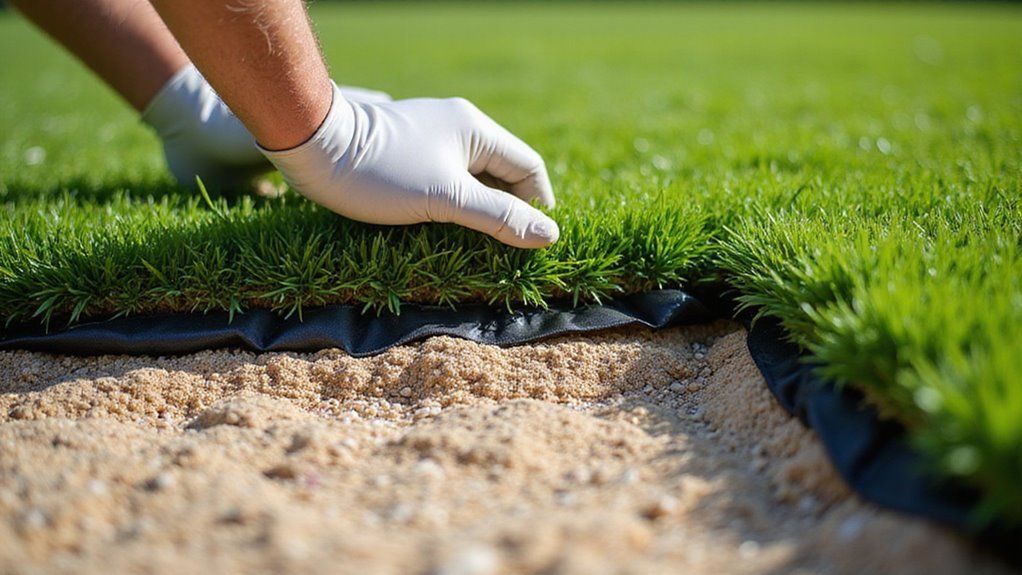
Troubleshooting Common Challenges and Accidents
Even with a consistent maintenance plan, certain challenges can arise that require specific interventions.
The Pet Owner's Playbook: Conquering Odor and Waste
Pet owners face the most common and persistent maintenance challenge:
- Daily Routine: The first line of defense is prompt and regular cleaning. Solid waste should be removed immediately with a bag or scooper. The area where pets urinate should be flushed with a hose to help the liquid drain.
- Monthly Deodorizing: For persistent odors, an enzyme-based cleaner is recommended. These cleaners contain enzymes and live bacteria that break down the ammonia-rich uric acid in pet urine, which is not water-soluble and will not be flushed away by water alone.
- Once or Twice a Year: A deep cleaning with an enzyme-based cleaner and power washing should be performed. Be sure to flush area well with water after power cleaning.
The Art of Stain Removal
Acting quickly to address stains is crucial, as a spill that is allowed to set can become much more difficult to remove.
- Liquid and Grease Stains: For spills like grease or cooking oil, the first step is to blot up as much as possible with paper towels or rags without scrubbing, which can push the substance deeper into the fibers. The area can then be cleaned with a mixture of dishwashing detergent and warm water. For spills like red wine, blotting should be followed by applying cold water and a solution of diluted white vinegar.
- Sticky Spills (e.g., gum): Chewing gum can be effectively removed by hardening it with ice cubes for about 10 minutes. Once brittle, it can be gently scraped off the surface with a flat-edged object like a butter knife.
Table: Stain and Spill Cleanup Guide
| Stain or Spill Type | Recommended Cleaning Method | What to Avoid |
|---|---|---|
| Grease / Cooking Oil | Blot spill first. Clean with a mixture of mild dish soap and warm water. | Do not scrub, as this pushes the oil deeper. |
| Wine | Soak the stain with cold water. Apply a solution of diluted white vinegar. | Harsh chemicals that can strip UV protection. |
| Sauces / Dressings | Blot spill first. Apply a paste of baking soda and water, gently brush. | Allowing the stain to set before cleaning. |
| Pet Urine | Hose down the area daily. Use an enzyme-based cleaner for odors. | Using only water, as it won't break down uric acid. |
| Chewing Gum | Harden with ice cubes. Gently scrape off with a flat-edged tool. | Attempting to pull or scrape off without hardening. |
Winning the War Against Weeds, Moss, and Pests
Weeds: Weeds are not a significant problem with properly installed turf, as the base aggregate should be deep enough to prevent weeds from pushing through the backing of the turf. When they do appear, they are most often found at the edges or seams of the lawn. Or, are rooting into the infill (airborne weeds). The safest method for removal is pulling them out by hand. For a chemical-free spot treatment, a solution of hot (but not boiling) water can be poured directly on the weeds to kill them. Boiling water should be avoided as the high heat can damage the synthetic fibers. Heavily salted water will also help kill and prevent weeds.
Moss and Mold: These issues are a sign of poor drainage and persistent dampness, especially in humid climates. They are most common on synthetic putting surfaces. The first step is to clear any debris that may be obstructing the drainage system. A commercial moss killer that is safe for synthetic turf can then be applied, or a homemade solution of equal parts white vinegar and water can be used. For mold, a solution of 1 part hydrogen peroxide to 10 parts water is an effective treatment.
Pests (Ants): Ants are attracted to any organic debris, food, or spills left on the surface. The best preventative measure is to maintain a clean turf with regular hosing and debris removal. During installation, a tightly compacted base can also prevent ants from digging tunnels.
Bringing It Back to Life: Addressing Matting and Flattened Blades
Matting is a natural result of heavy foot traffic and is a clear sign that the turf's fibers need attention. The primary solution is regular brushing against the grain of the turf to restore the blades to an upright position. This process also helps to redistribute infill material, which is necessary to support the fibers and maintain a lush appearance. If the infill has significantly settled or been lost, it must be replenished in high-traffic areas to continue providing proper support.
Beyond the DIY: When to Call in a Professional
While a diligent homeowner can handle most routine maintenance tasks, there are specific situations where the expertise and specialized equipment of a professional service are warranted. Synthetic Turf Treasure Coast can provide a professional cleaning or yearly maintenance packages. Call us today at 772-245-8546 and ask about our packages.
Recognizing the Red Flags
- Serious Damage: Large tears, holes, or extensive fraying along the edges of the turf are typically beyond a simple DIY fix. These repairs require specialized tools and techniques to ensure the integrity of the surface is restored.
- Significant Wear and Tear: If a turf is nearing the end of its projected lifespan (10+ years) and the fibers are severely faded, flattened beyond repair, or the surface has become lumpy from a shifting base, it may be time to consult with a professional for an assessment.
- Persistent Odors or Drainage Issues: If foul odors or standing water persist despite consistent DIY cleaning and debris removal, it often indicates a deeper problem with the infill or the sub-surface drainage system. Synthetic Turf Treasure Coast has the equipment to perform a deep clean, including infill extraction, and can identify and correct issues with the base layer.
A Professional Maintenance Service from Synthetic Turf Treasure Coast will include:
Professional maintenance offers a comprehensive and efficient solution for homeowners and facility managers. These services typically go beyond a simple cleaning. Synthetic Turf Treasure Coast will maintain your turf, even if you did not purchase from us.
- Services Offered: Synthetic Turf Treasure Coast professional maintenance packages include an initial power broom cleaning to loosen and remove embedded debris, a comprehensive inspection of the turf's health and integrity, infill redistribution and replenishment, specialized treatments such as pet urine odor eliminators and minor edge repairs.
- Residential Pricing: The cost of professional residential maintenance varies based on the size of the lawn and the services provided. Basic packages may start around $500 for a minimum square footage, while comprehensive annual plans for a typical yard can range from $750 to $1,500. Call our Team at Synthetic Turf Treasure Coast for a free maintenance evaluation or a multi-service annual plan.
- Commercial Pricing: For large-scale projects, such as athletic fields, the annual cost of maintenance can be significantly higher, ranging from $7,000 to $23,000, depending on the field's size and the intensity of its use.
Take a look at some of our Projects
Synthetic Turf
Treasure Coast
Here’s a sample of some of our recent projects. Inspired by what you see? It’s only the beginning!
Artificial turf offers a durable, beautiful, and low-maintenance alternative to a natural lawn. However, its longevity and aesthetic appeal are not guaranteed; they are the result of a small, consistent investment in its care.
By understanding the causal cascade of neglect, adapting maintenance to environmental conditions, using the correct tools and products, and knowing when to seek professional help, property owners can move beyond the myth of a "no-maintenance" lawn.
This proactive approach ensures that the turf remains a safe, hygienic, and pristine landscape for years to come, fully realizing the promise of a perfect, hassle-free lawn.
Upgrade your yard and work with the best artificial turf installers near me in Palm City, FL. We service a 100 mile radius. Call us today to schedule an appointment and no-obligation estimate.
“The bitterness of poor quality is remembered long after the sweetness of low price is forgotten”
Benjamin Franklin
Give Us a Call Today!
FROM VERO BEACH TO JUPITER, THE TEAM AT SYNTHETIC TURF TREASURE COAST HAS OVER 50 YEARS COMBINED EXPERIENCE IN THE SYNTHETIC TURF INDUSTRY. WE CAN MAKE YOUR ARTIFICIAL TURF EXPERIENCE A GREAT ONE!
CALL US TODAY AT
772-245-8546 TO SCHEDULE YOUR FREE CONSULTATION.
